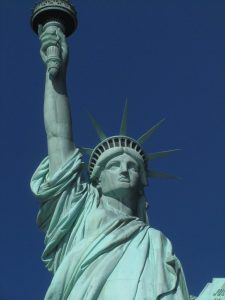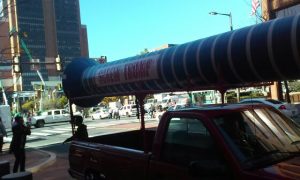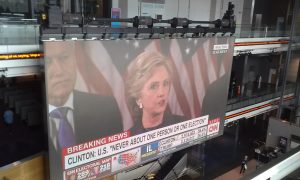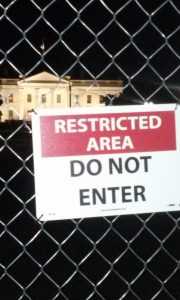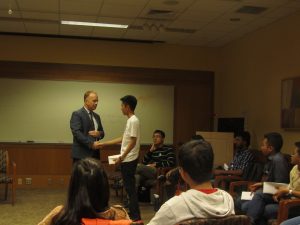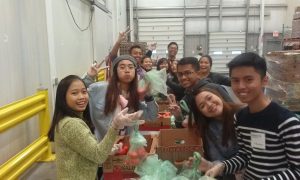In her book, Teaching to Transgress, bell hooks states, “As a classroom community, our capacity to generate excitement is deeply affected by our interest in one another, in hearing one another’s voices, in recognizing one another’s presence.” In a service-learning course, students share their own personal stories and reactions to the work they are doing as a method to connect what they are learning inside the classroom to the work they are doing outside of it. But the connections constructed in service-learning classes have the potential to extend well beyond the classroom walls. Through guided reflection, students can learn to recognize their own stories in the lives of others and in the communities in which they live and work.
In January of 2017, as part of a year-long initiative focused on the rights of non-citizens, the Stamford campus of the University of Connecticut sponsored a course titled, Special Topics in Human Rights: Citizenship and Education Rights. The goal of the class was to explore various theories of citizenship and describe the multiple layers of policies that affect immigrant students living in Connecticut. Through the service component of the course, students would gain firsthand knowledge of the struggles faced by non-citizen students as well as the types of services available to them in the community. Some students chose to volunteer with the immigrant services organizations while others became involved with an advocacy group run by undocumented students that is active in Connecticut. Still others focused their attention on policy work, conducting research on the sanctuary campus movement and presenting their findings to campus administrators. The uniting factor of these activities was our weekly meeting, where students shared their experiences and reflected on how they connected to the course material and their own lives.
One of the more memorable reflection assignments came midway through the semester during a week when we were studying theories of citizenship. The reading for the week focused on the concept of “lived citizenship,” or “the meaning that citizenship actually has in people’s lives and the ways in which people’s social and cultural backgrounds and material circumstances affect their lives as citizens” (Hall and Williamson 1999, 2). After completing the reading, students were asked to describe in their journals a time where their social or “lived” citizenship did not match their legal citizenship. In essence, this assignment asked students to recall a time when they, like undocumented immigrants, did not have an equal voice within a particular political community. Some students struggled with the prompt, with two writing that they had never been in such a situation. Many others, however, were able to identify and relay their past experiences.
In the classroom discussion for the week, students were encouraged (but not required) to share what they had written in their journals. This exercise was particularly useful as students had interpreted “social citizenship” in such a wide variety of ways. The activity sparked a lively discussion, with students going beyond what they had written in their journals to share additional examples of their “lived citizenship” experiences. In fact, both students who had initially written in their journals that they had never experienced a dissonance between their social and legal citizenship were, after listening to the discussion, able to contribute examples from their own lives.
This ability to “other” oneself, to see oneself as having some of the same vulnerabilities as the group being served, while still acknowledging the existence of differences, becomes a primary component of building empathy among students. In the reflection exercise described above, students were encouraged to think of a time when they felt frustrated because their political voice was not heard due to an aspect of their social situation. For the openly undocumented students in the class, this assignment was straightforward. But for the US citizens, the assignment pushed them to examine their own vulnerabilities, revisit the emotions they felt in that situation, and then, through guided classroom discussion, recognize their own experiences in each other. Students learned that the category of “other” is fluid and context dependent and that even they can be othered under the right circumstances. All of these experiences become important components of the construction of identity, and, in turn, the bolstering of sustained civic engagement.
